UNESCO World Heritage includes natural or man-made sites for which, according to UNESCO, their preservation and promotion are priorities due to their special cultural, historical or environmental significance.
As of 2018, there are 1,092 properties on the World Heritage List in 167 member countries, of which 845 are cultural, 209 are natural and 38 are mixed.
Armenia, which has been a member of UNESCO since 1992. – one of the oldest countries in the world, a country that in the year 301 was the first in the world to adopt Christianity as a state religion. It is not surprising that Armenia is home to many UNSECO World Heritage Sites.
The Cathedral of Echmiadzin is located 20 km from the capital of Armenia in the city of Echmiadzin. It is the religious center of Armenia and the residence of the Catholicos of all Armenians. Built in the 4th-5th century, the cathedral is considered one of the oldest Christian cathedrals in the world. According to legend, it is believed that the place for the construction of the cathedral was indicated to Gregory the Illuminator by Jesus Christ. From here comes the name of the Echmiadzin Cathedral, which in translation from Armenian means – Descended only-begotten.
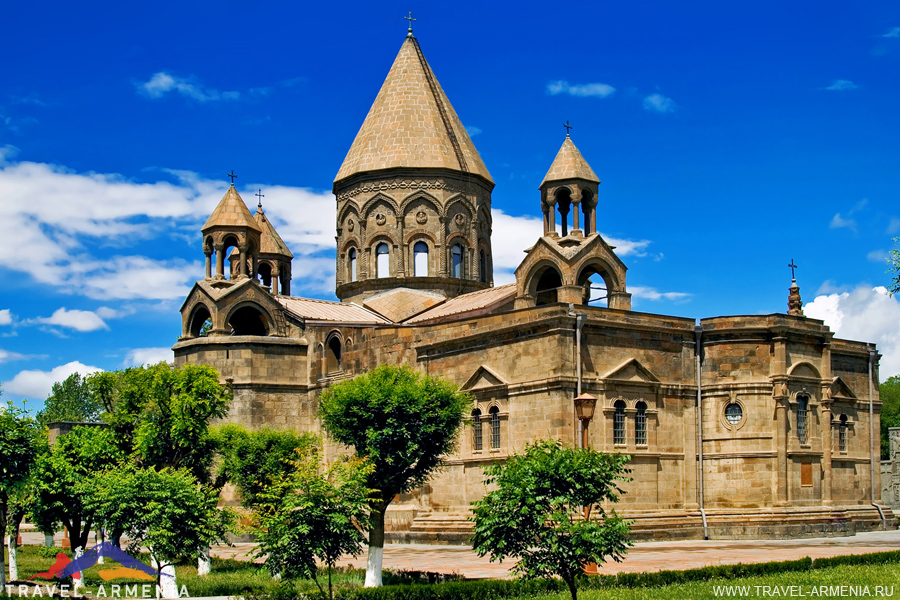
Church of St. Hripsime – The church was built in 618 on the site of an ancient pagan temple, where St. Hripsime was tortured and killed. The church is a classic example of Armenian architecture and is a true engineering marvel, with little to no damage since its construction.
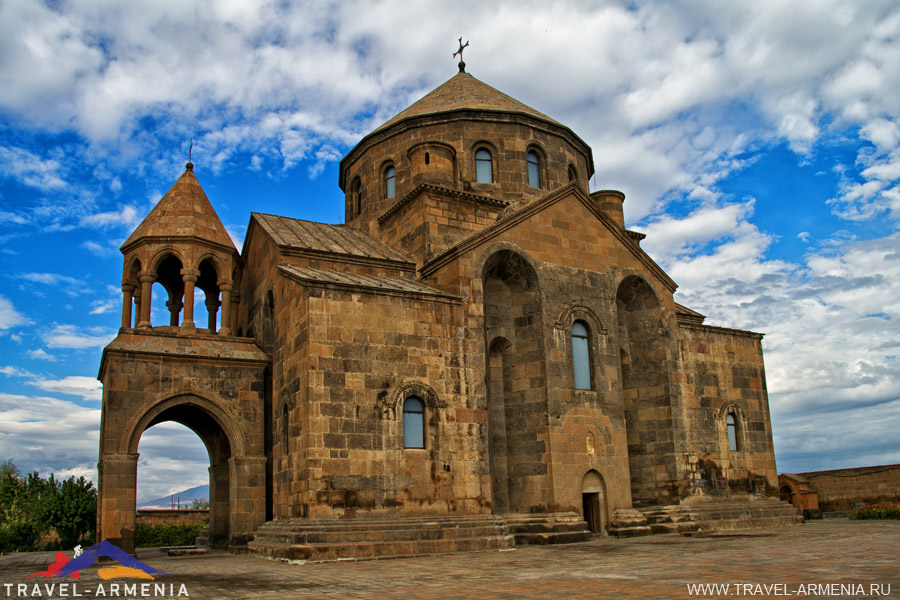
Church of St. Gayane – the church was built in 630 AD. From that time to the present day, the appearance of the building and its interior decoration have come down almost unchanged. Only during the reconstruction of the 17th century were the dome and ceilings partially changed.
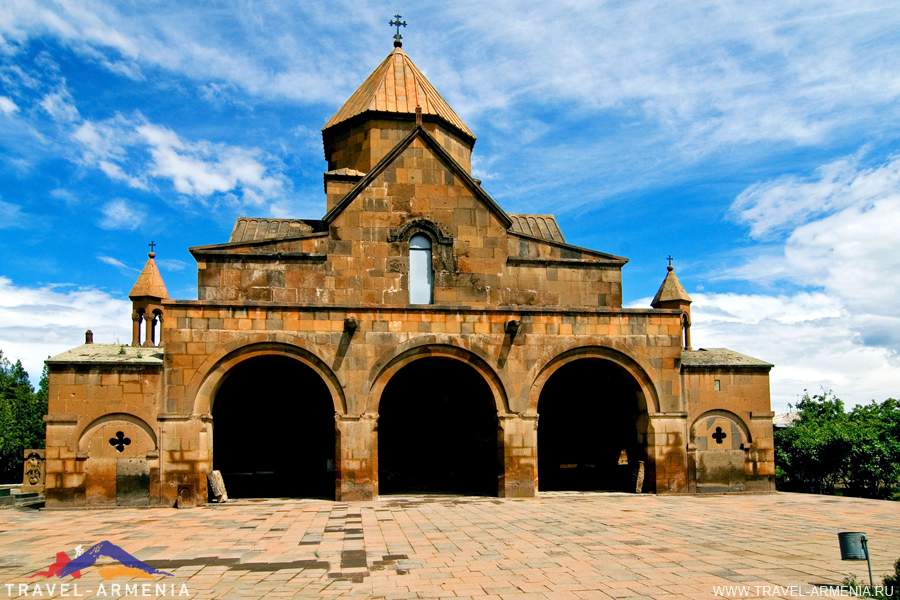
Zvartnots Temple – which in ancient Armenian means “Temple of vigilant angels”. Located between Yerevan and Echmiadzin.
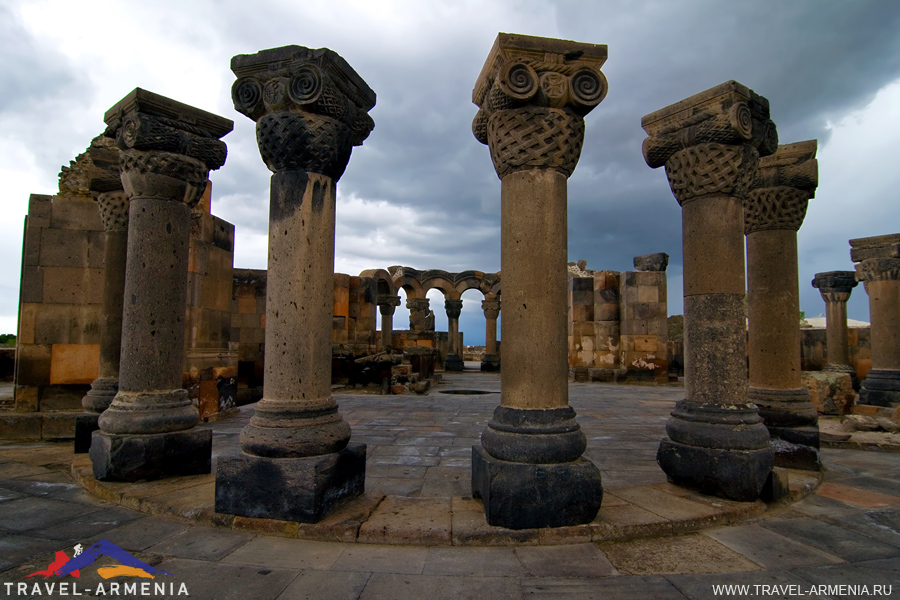
The monastery complex of Geghard and the upper reaches of the Azat River is a monastery complex, a unique architectural structure. Located in the gorge of the mountain river Azat, about 40 km southeast of Yerevan.
The name of the monastery complex comes from the spear of Longinus, which was used to pierce the body of Jesus Christ on the Cross, and, allegedly, was brought to Armenia by the Apostle Thaddeus, among many other relics. Now the spear is exhibited in the treasury of Echmiadzin.
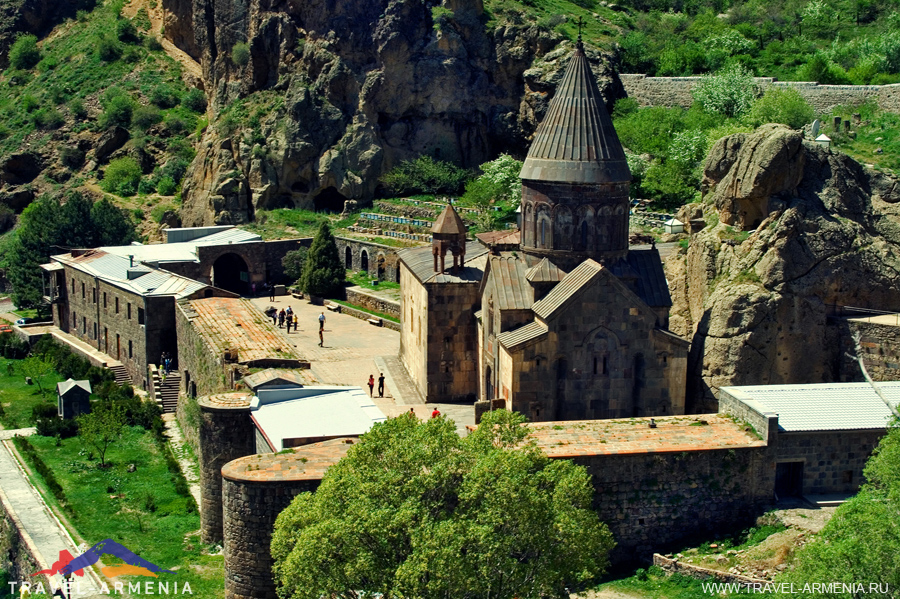
The monastery is located on the slope of an almost closed amphitheater of sheer cliffs, crashing into the blue of the sky, surrounded by harsh and majestic nature. The impressive towering cliffs surrounding the monastery are part of the Azat River Gorge.
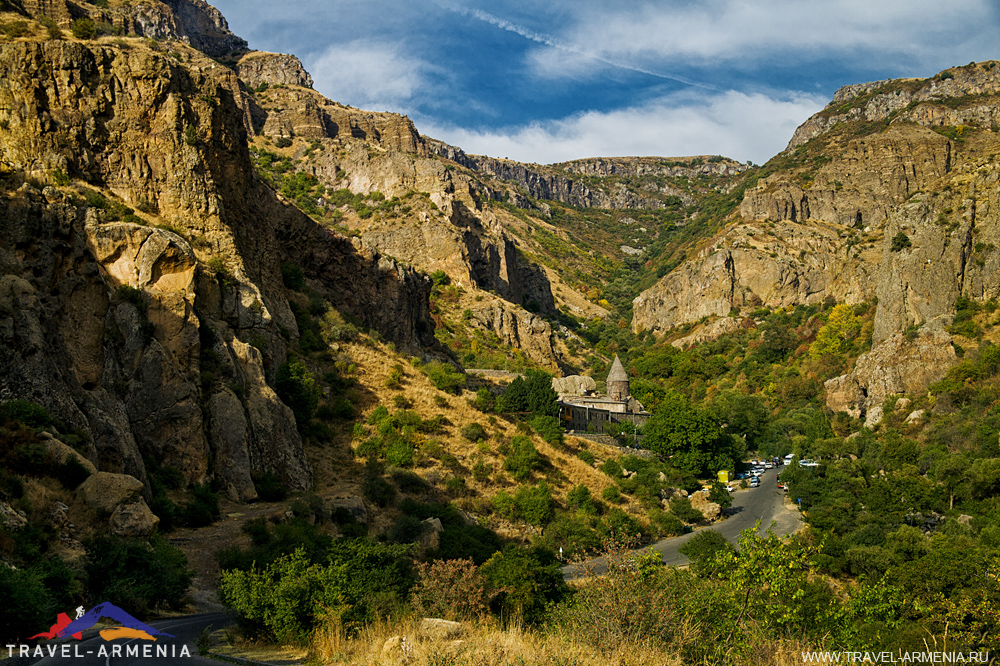
Some temples of the monastery complex are completely hollowed out inside the rocks, others are like caves, while some are complex structures, both with a walled room and with space deep inside the cliff.
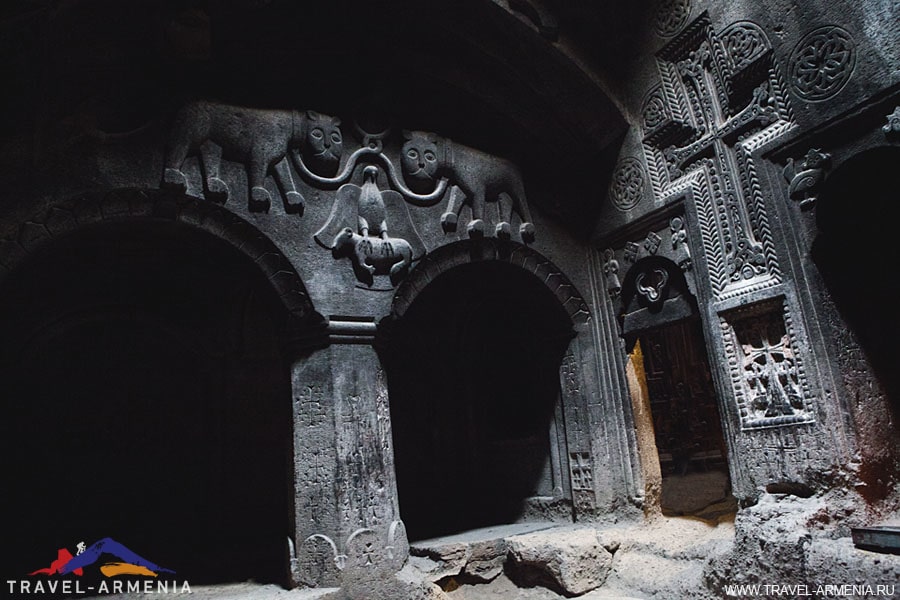
Monasteries of Haghpat and Sanahin.
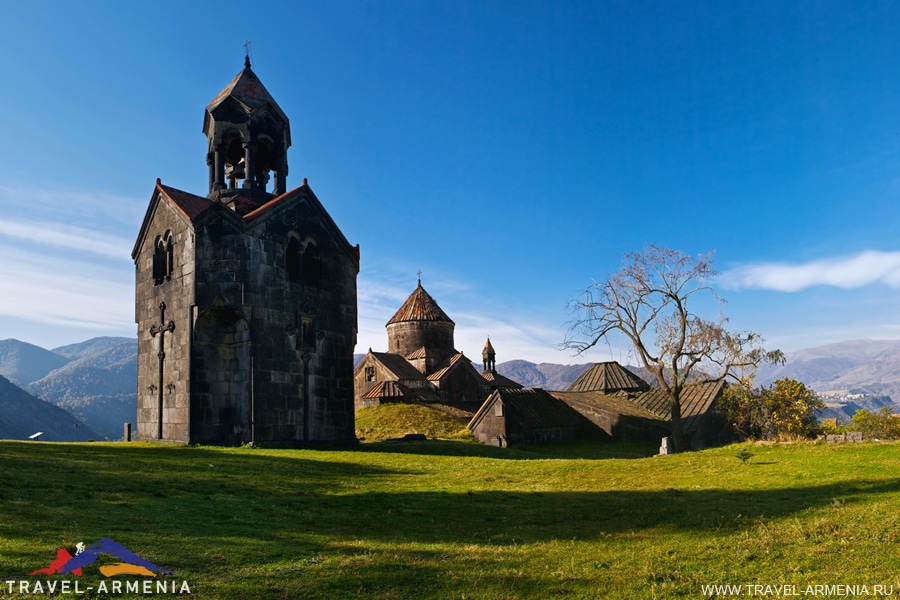
These two monasteries are very similar. They are so similar that according to one of the legends, they once argued and quarreled over which of them was more important and beautiful. In the end, Sanahin declared: “I am the most beautiful and important, since I am older than you.” The name “Sanain” means “older than this.”
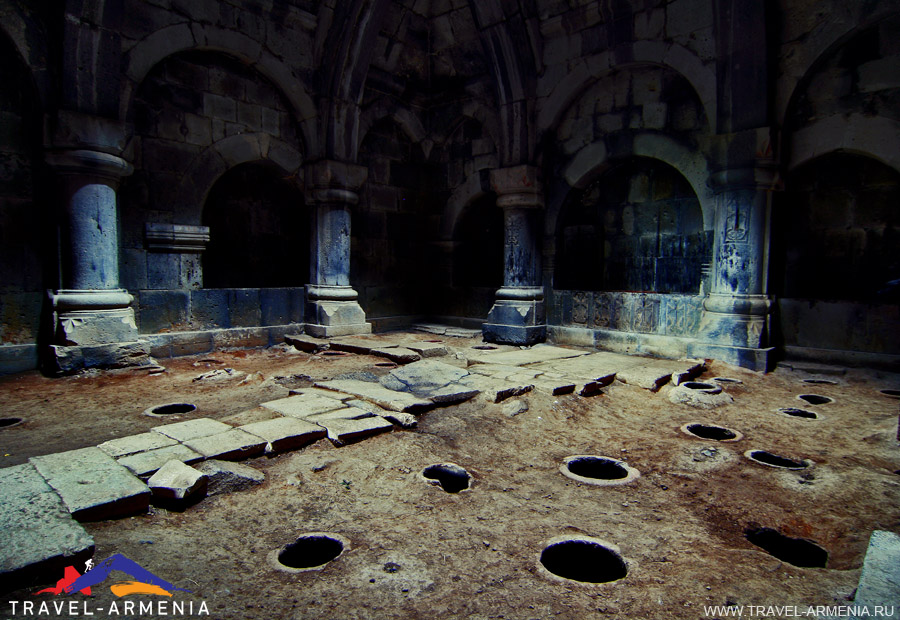
Haghpat Monastery is located on a small plateau surrounded by gorges. Founded in 976 under Ashot III the Merciful. Queen Khosrovanush played a significant role in founding the monastery. In the X-XIII centuries. was one of the centers of the spiritual culture of Armenia, a large monastic possession, which had vast land with villages and peasants
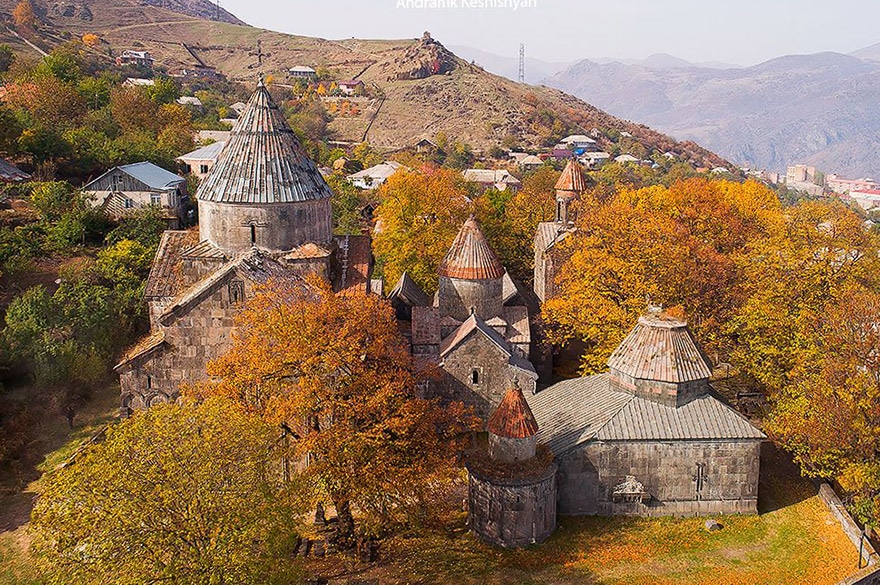
The monastic complex Sanahin, founded in the 10th century, has gained worldwide fame. X-XI centuries The number of monks of the brethren in the X-XI centuries. here reached up to 300-500 people. It is assumed that these were Armenian priests expelled from Byzantium by Emperor Roman I Lekapin.
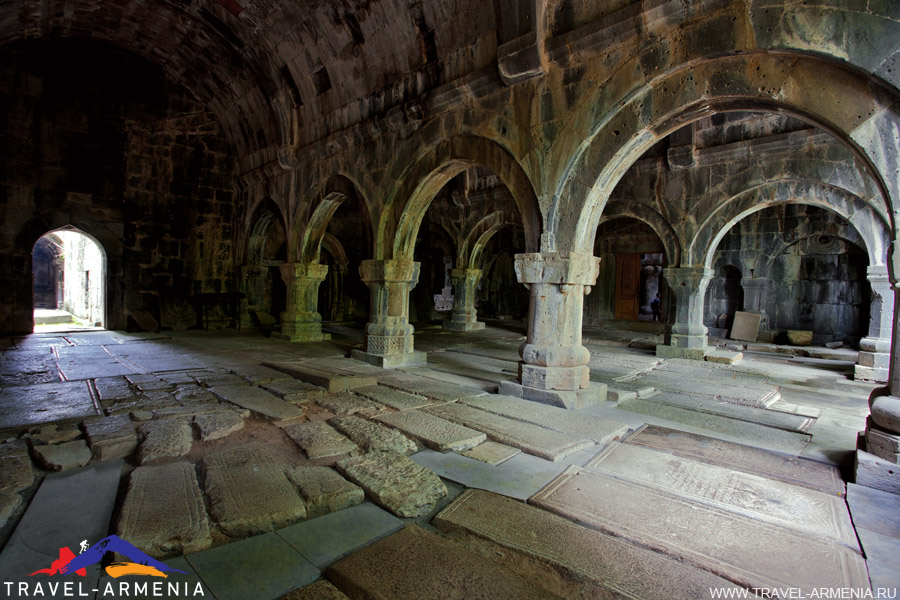
UNESCO Intangible Heritage in Armenia
Duduk and his music. The duduk is an Armenian wind instrument made from apricot wood. The sounds of the duduk have fascinated and inspired many to travel to its historic homeland.
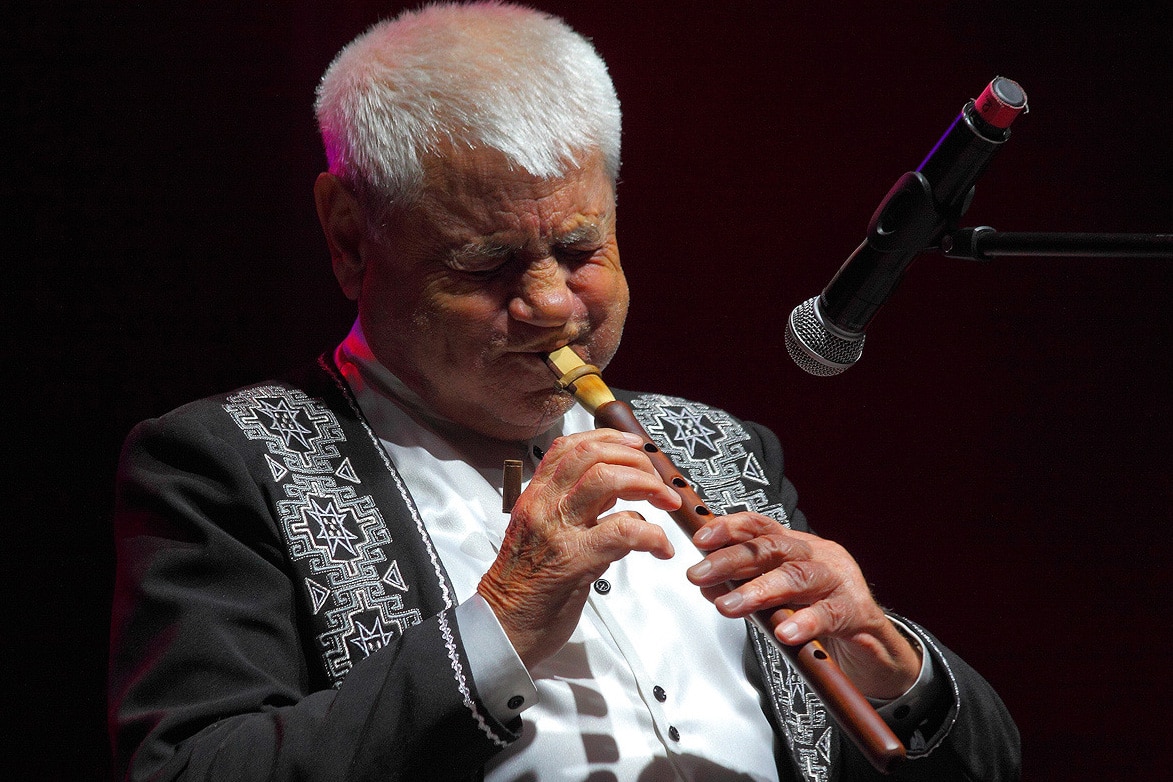
Armenian khachkars. Khachkar is literally translated from Armenian as “cross-stone”. The predecessors of khachkars are stone steles – vishaps, which were installed in the mountains and near roads in ancient times to mark territories.
The history of the emergence of khachkars takes us back to the time of the adoption of Christianity in Armenia. Then, at the beginning of the 4th century, wooden crosses were erected on the site of the monuments of the pagan cult, but since in that era the wooden monuments were burned by opponents of the new religion, Christians began to replace them with stone ones.

Epic David of Sassoun. Medieval Armenian epic, which tells about the struggle of the heroes from Sasun (a region in historical Armenia, now in Turkey) against the Arab invaders. It was formed in the VIII-X (no later than the XIII) centuries. The epic consists of four branches. The first is Sanasar and Baghdasar, the second is Mher the Elder, the third is David, the fourth is Mher the Younger.
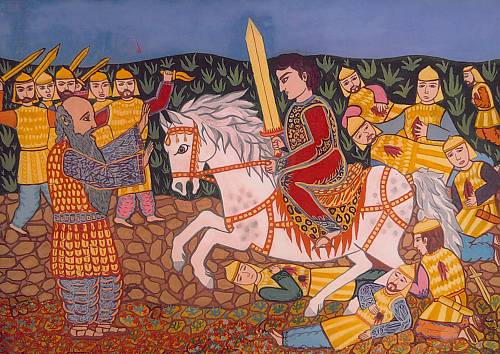
The epic “David of Sasun” is truly great among other epic tales of the people who created it. This is a truly Armenian folk epic. This enoc is called popular not only because it lives in the masses of the people and is affected by them, it is popular primarily because the whole worldview of its heroes is inextricably linked with the truly popular lower classes, that all its heroes are inextricably linked with the people, and not with those who for thousands of years held in his hands the fate of the Armenian people.
Lavash: Making Traditional Bread, Significance and Cultural Manifestations in Armenia”
Lavash is a traditional Armenian bread. Since ancient times, this bread has been an integral part of Armenian culture.

You can read how lavash is prepared and what it means for Armenians in our article – Armenian lavash.
Armenian dance Kochari.
This ancient Armenian dance is the most popular dance among all Armenians. At all festivities, Armenians necessarily dance kochari, which is of pagan origin.
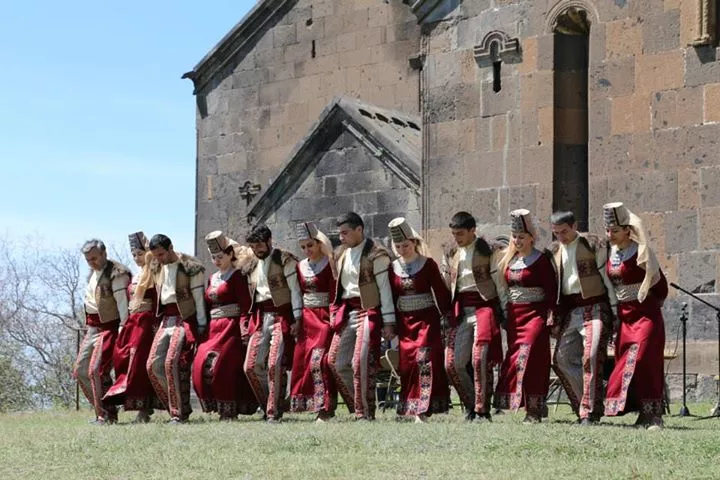
To learn more about our culture, ancient monuments, customs, history – welcome to Armenia. We are waiting for you.